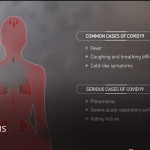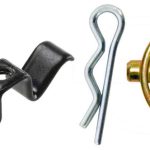
Introduction
Temperature management is a critical aspect of automotive design, affecting engine performance, passenger comfort, and overall vehicle reliability. In this context, the constantly-evolving automotive industry has witnessed a significant impact from the integration of multi-channel temperature sensors. These multifunction sensors have revolutionised the way vehicles are designed, making them safer, more efficient, and increasingly responsive to both environmental and operational conditions.
But what are the multi-channel temperature sensors? What benefits do they offer to automotive companies and users over traditional thermal sensors? How do they impact automotive designs? Learn all these answers in our comprehensive article.
Introduction to Multi-Channel Temperature Sensors
Multi-channel temperature sensors, as the name suggests, are advanced sensing devices designed to monitor thermal conditions at multiple points simultaneously. In the context of automobiles, these sensors come equipped with multiple temperature-sensing elements or channels distributed throughout the vehicle, providing real-time data from various locations within the vehicle. A multi-channel temperature or thermal sensor can be embedded in critical areas of vehicles, such as the engine, transmission, exhaust system, battery packs, and cabin, to provide precise, real-time data for better control and performance optimisation––enhancing vehicles’ performance and durability.
The Significance/Need for Advanced Multi-Channel Temperature Sensors in Automotive Design
Traditional temperature sensors are single-channel devices that can monitor a specific area or component within vehicle systems. They are cost-effective, reliable, and provide reasonably accurate readings but may have limited precision and sensitivity. Additionally, traditional automotive sensors may lack diagnostic features, making it challenging to identify sensor failures or drift in real time. These factors necessitate the integration of advanced multi-channel sensors in modern vehicles, enhancing driver and passenger safety by preventing overheating and potential thermal-related hazards.
Multi-Channel Temperature Sensors-Based Automotive Designs: Exploring Their Transformative Impacts
Multi-channel temperature sensors in automotive designs play a critical role in ensuring safety, efficiency, and performance. Let’s explore their impacts on different aspects of automotive design:
Enhancing Engine Performance and Efficiency
One of the notable roles of multi-channel temperature sensors in automotive design is in engine management. With precise temperature readings from various engine components, these sensors enable more effective control of fuel injection and ignition timing––leading to improved engine performance, higher fuel efficiency, and reduced emissions. Additionally, by monitoring critical components such as the cylinder head, exhaust manifold, and coolant system, these sensors help in the early detection of potential issues, preventing costly repairs and extending engine life.
Improving Safety and Reliability
Safety and reliability are paramount in automotive design. Multi-channel thermal sensors contribute significantly to monitoring critical systems such as brakes, transmission, and battery systems. For instance, in electric vehicles (EVs) and hybrid cars, these sensors (battery temperature sensors) ensure the batteries operate within their optimal temperature range, preventing overheating and potential fires. Similarly, in braking systems, brake fluid temperature sensors help maintain effectiveness and avoid failure due to overheating, especially under heavy usage.
Enhancing Comfort and Convenience
Using multi-channel temperature sensors, for example, cabin temperature sensors and exhaust gas temperature sensors, also enhances the comfort and convenience of passengers. They provide real-time data that enables the vehicle’s HVAC systems to maintain a consistent and comfortable cabin temperature.
Facilitating Advanced Driver Assistance Systems (ADAS)
Advanced Driver Assistance Systems benefit from the integration of multi-channel temperature sensors. These systems, which include features like adaptive cruise control, lane-keeping assistance, and automatic emergency braking, rely on various electronic components that must operate within specific temperature ranges. Bespoke advanced sensors ensure these systems function reliably, especially in extreme weather conditions, enhancing overall vehicle safety and performance.
Supporting Autonomous Vehicle Technology
As the automotive sector moves towards autonomous vehicles, the role of multi-channel temperature sensors becomes even more critical. Autonomous vehicles rely heavily on electronic systems and sensors to navigate and make decisions––and maintaining these systems at optimal operating temperatures is essential for accurate and reliable functioning. Multi-channel temperature sensors provide the necessary data to ensure all components––from onboard computers to sensor arrays, operate efficiently and effectively.
Examples of Automotive Companies Implementing Multi-Channel Sensors: Case Studies
Many automotive companies have been implementing multi-channel sensors in their vehicles to enhance safety, improve performance, and enable ADAS and autonomous driving features. Some of the leading automotive companies that have adopted multi-channel sensor technologies include:
- Tesla – Tesla’s vehicles are equipped with multiple sensors, including ultrasonic sensors, cameras, radar, and LiDAR, that work together to enable features such as Autopilot and Full Self-Driving capabilities.
- BMW – BMW utilises combined sensors, including cameras, ultrasonic sensors, radar, and LiDAR, in their vehicles to enable various features, creating a multi-channel sensor ecosystem for improved safety and convenience.
- Mercedes-Benz – Mercedes-Benz employs a variety of sensors to support its advanced driver-assistance systems.
- Ford – Ford has been integrating multi-channel sensors, including radar and camera systems, into their vehicles for features such as the Ford Co-Pilot360, which includes adaptive cruise control, lane-keeping systems, and collision avoidance.
- Nissan – Nissan incorporates multi-channel sensor technology in their ProPILOT systems, with features like adaptive cruise control and lane-keeping assistance. These systems use cameras and radar sensors to monitor the vehicle’s surroundings.
Conclusion: The Future of Automotive Industry Adopting Multi-Channel Temperature Sensors
Integrating multi-channel temperature sensors in automotive design has brought significant advancements in terms of engine performance, safety, and comfort. These sensors are critical for maintaining and optimising vehicle performance––and their significance has already been demonstrated through successful implementation by renowned automotive companies such as Tesla, Mercedes-Benz, BMW, and Ford.
With further progression in automotive technology, the impact of these sensors is expected to become even more integral––driving innovations and improvements in vehicle design and functionality. The future of the automotive industry (especially autonomous vehicle technology) will undoubtedly witness an increased reliance on these versatile and essential components, paving the way for safer, more efficient, and comfortable vehicles.




















